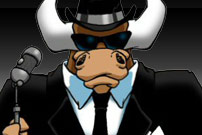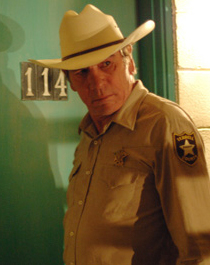 With the temperature dropping, it's time to find someone to keep you warm. Find your hookups with our online dating guide!
With the temperature dropping, it's time to find someone to keep you warm. Find your hookups with our online dating guide!
Tommy Lee Jones
Celebrities Home / Entertainment Home
Long before earning the reputation as the performer of grizzled, no-nonsense characters who know too much of how the world works and have seen it all, Tommy Lee Jones was playing football at Harvard, studying English, and rooming with a fellow from Washington, D.C. named Al Gore. But during the summers, Jones would participate in repertory theatre near Harvard, providing an opportunity for him to develop his inherent acting talents and critical performance skills by taking on works by Shakespeare and Bertolt Brecht.
Upon graduating cum laude in 1969, Tommy took to New York City with theatre as his bread and butter. As for appearing on screen, “One Life to Live” called and offered him the role of coveted character Dr. Mark Toland. Tommy spent four years on the soap, and following his tenure, graduated to appearances on hit shows like “Barnaby Jones” and “Charlie’s Angels.” While success in the film world was still off in the distance, Tommy contributed an interpretation of reclusive Howard Hughes in the 1977 CBS miniseries “The Amazing Howard Hughes,” though the TV event didn’t fare too well for the network.
Tommy inaugurated the 1980s as Sissy Spacek’s husband in “Coal Miner’s Daughter,” which brought her a Best Actress statuette. Though constantly working – nearly 20 projects in the decade – Tommy still struggled to make a genuine big screen breakthrough. Another miniseries came his way, this time the much-lauded instant classic “Lonesome Dove” in 1989, bringing Tommy both an Emmy nod and Golden Globe nomination. Filmed in Texas and New Mexico, “Lonesome Dove” would foreshadow Tommy Lee Jones’ fascination and identification with the Western landscape, something Jones would explore years later as a director in “The Three Burials of Melquiades Estrada.” Off the heels of “Lonesome Dove” was the Gene Hackman crime thriller “The Package,” helmed by Andrew Davis, and featuring Tommy as a military prisoner. Four years later, Jones and Davis would re-team for “The Fugitive,” bringing his Oscar.
But perhaps Tommy’s breakout performance was not as Marshal Sam Gerard chasing Harrison Ford around Chicago, but as the subject of Jim Garrison’s conspiracy case, Clay Shaw, in Oliver Stone’s sprawling “JFK.” Donning a wig, makeup, and hiding behind looks of bemusement and evasion, Jones’ Shaw was one of the many dazzling performances in that movie. It also established his ability to navigate between serious pictures like “JFK,” Stone’s later “Heaven & Earth,” and the recent “In the Valley of Elah” with genre, popcorn entertainments as “Batman Forever,” “Double Jeopardy” and “Men in Black.” By the time Tommy had the privilege to participate in these projects, he had the credentials of an established actor rather than just a young, fleeting name.
Impressively, Tommy refused to let the lowbrow fare such as “Volcano” threaten his yearning to continue exploring his range. By the mid-2000s, after working for William Friedkin on “The Hunted” and Ron Howard on “The Missing,” Tommy made his feature directorial debut with “The Three Burials of Melquiades Estrada,” which he also co-produced and starred in along with Barry Pepper and Julio Cedilla. The widely praised film earned him Best Actor at the Cannes Film Festival and received a nomination for the Golden Palm. It also brought him an Independent Spirit Award nomination. The film also seemed to ignite a renaissance within Tommy Lee Jones.
After appearing in Robert Altman’s final film “A Prairie Home Companion,” Tommy starred as Hank Deerfield in “In the Valley of Elah,” the 2007 drama that eventually earned the actor his second Best Actor nomination. That same year featured him as world-weary sheriff Ed Tom Bell in “No Country for Old Men.” And so, in the latter part of the 2000s, it seems that Tommy Lee Jones has journeyed a long trail and is bringing that experience to his many characters. Part of his long, great success might be that we manage to believe everything he says on screen.
 Tired of striking out? Check out these Dating Tips for all sorts of advice on how to finally get the girl! Also, we tell you all about some of the best online dating sites and how you can use them to hook up with more women!
Tired of striking out? Check out these Dating Tips for all sorts of advice on how to finally get the girl! Also, we tell you all about some of the best online dating sites and how you can use them to hook up with more women!
Tommy on the Web
IMDb
Ultimate web resource guide for Tommy.
Wikipedia
Decent bio with facts on his early life.
Tommy on the Screen
He’s credited as Tom Lee Jones in “Love Story” in 1970 before working four years on “One Life to Live” as Dr. Mark Toland. He’s Officer Hutton in the 1976 TV movie “Smash-Up on Interstate 5,” Cpl. Vohden in the William Devane revenge thriller “Rolling Thunder,” and Gary Mark Gilmore in the Norman Mailer TV film “The Executioner’s Song.” He’s Woodrow F. Call in “Lonesome Dove,” prisoner Boyette in “The Package,” Clay Shaw in “JFK,” William Stranix in the Steven Seagal actioneer “Under Siege,” and the Revered in “The Client.” In 1994, Tommy plays the warden in Stone’s “Natural Born Killers,” is the titular baseball great in “Cobb,” and plays Mike Roark in “Volcano.” He’s Agent K twice in “Men in Black” and its 2002 sequel, returns as Sam Gerard in “U.S. Marshals,” and is Col. Hayes Hodges in the 2000 military legal drama “Rules of Engagement” for Billy Friedkin. He’s Hawk Hawkins in the Clint Eastwood space comedy “Space Cowboys,” hunts Benicio Del Toro in “The Hunted,” is a Native American shaman in “The Missing,” and is Roland Sharp in the 2005 under-the-radar comedy “Man of the House.”
Tommy Says
On his movies:
“I have worked on very good movies that have been buried, and I've worked on some resounding mediocrities that have been paraded through the marketplace like they were masterpieces.”
On participating in “JFK”:
“One of the most daring things I've done.”
You can follow us on Twitter and Facebook for content updates. Also, sign up for our email list for weekly updates and check us out on Google+ as well.











